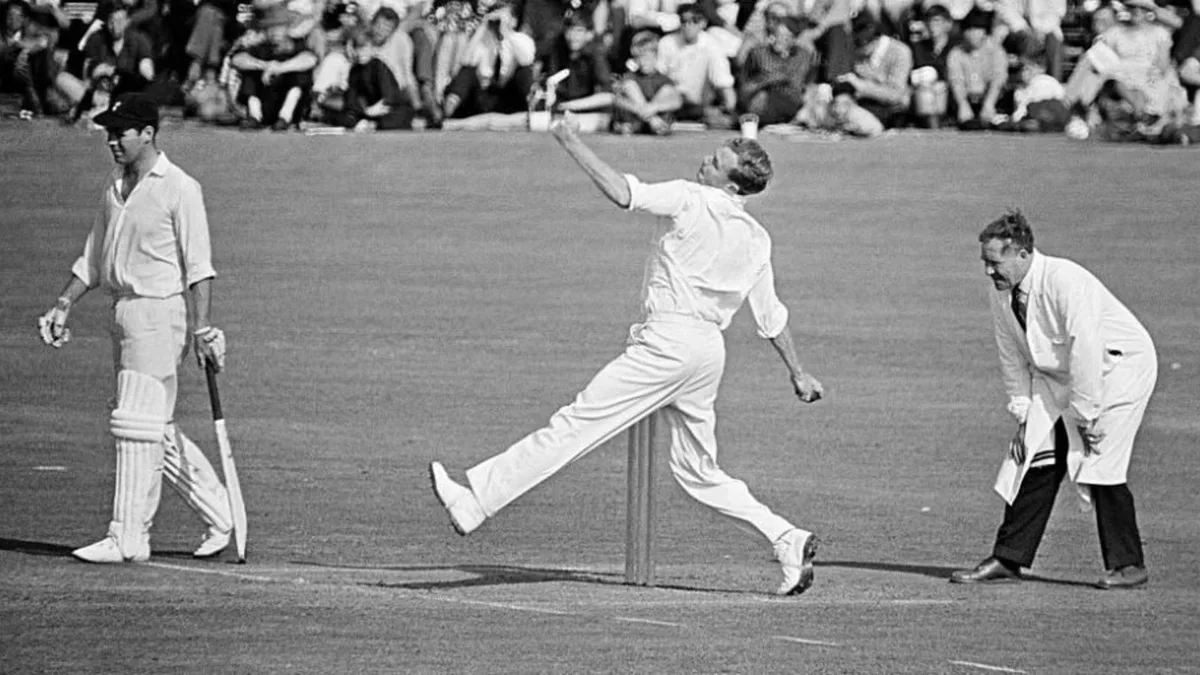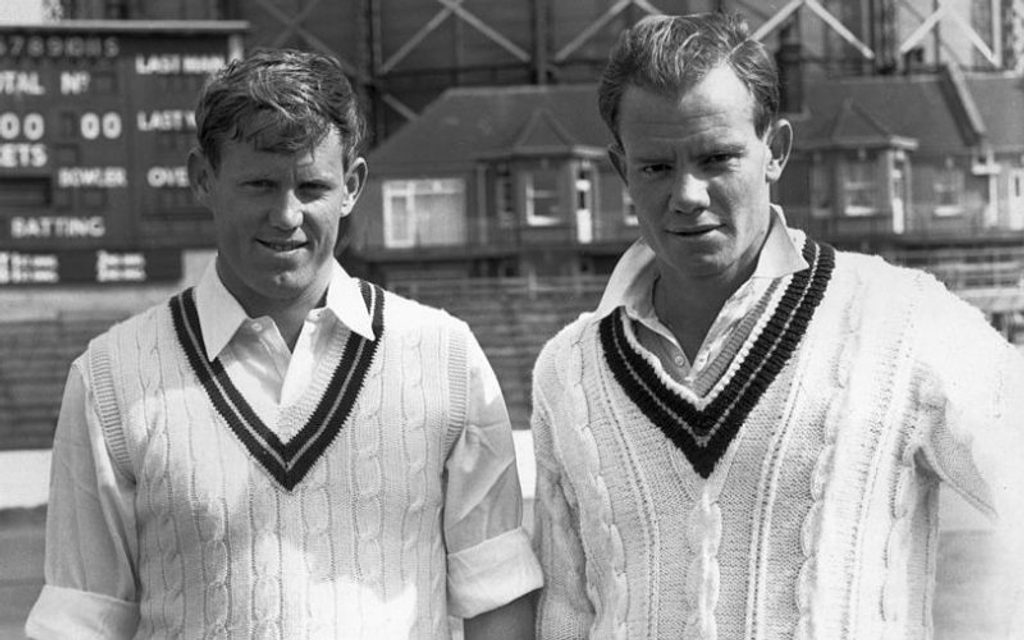
South Africa’s series victory in England in 1965 owed much to the performances of a pair of brothers – Graeme Pollock starred with the bat, while Peter was their outstanding strike bowler. Both were named Wisden Cricketers of the Year.
Peter Pollock’s Test career continued until South Africa were forced into sporting isolation in 1970. In 28 Tests, he took 116 wickets at 24.18.
When one of his colleagues praised the South African fast bowler by saying, “You’re using a bit more kop (Afrikaans word for ‘head’) over here”, he expressed in simple terms the reason why Peter Pollock, at the age of 24, lifted his skill to new heights on the 1965 tour of Britain. Strongly built and 6ft 2ins tall, he had been known until last season, primarily for his burning ambition to produce pace, at any price. There was no subtlety, no variation in his overs – just brute-force bowling, flat out.
In England, a new planet moved into his ken. He suddenly discovered refinements. He bowled well within himself, reserved his fastest ball for special assault as a soldier holds his fire, almost eliminated bouncers, improved his control and gained more movement in the air. Like his predecessor N.A.T. Adcock in 1960, he became indispensably the outstanding member of the South African attack. The pitches gave him more help that they do in the southern hemisphere. The conditions were softer and cooler and whereas he bowled best with a quota of 22 overs a day at home and 18 in Australia, he was able in England to extend his spells to between 24 and 30 overs.
At the start of the season it was proposed that he should reduce his long run. The poetry of sheer strength enriched the aesthetic spectacle of his action, but there was fear that it would not only reduce the desired number of overs per hour but would also tax his stamina. He has always found that he loses rhythm and speed in a short run and because there were several seam bowlers in the side it was decided to let him become the one explosive force in the attack. He bowled more overs than anyone else and responded to heavy calls on his services without sustaining injury.
The best performance of his career was accomplished when he took five for 53 and five for 34 in the second Test at Trent Bridge and in the three matches of the series he gathered the imposing number of 20 wickets at an average of 18.30. Six times in his 12 matches of the tour he took five wickets in an innings and finished top of the averages with 50 wickets for an average of 17.02.
All aspects of his cricket revealed the same maturity that was evident in his bowling. He became one of the most accurate throwers in a team conspicuous for its accomplished fielders and consistently played responsible innings, including 34 as No.10 in the first Test at Lord’s and 51 not out as No.9 against Lancashire.
 Graeme (left) and Peter Pollock at a practice session at the Oval, August 1965
Graeme (left) and Peter Pollock at a practice session at the Oval, August 1965
Peter Maclean Pollock was born in Pietermaritzburg on June 30, 1941. Like his brother, he was nurtured in backyard cricket and displayed a similar versatility in all sports at the Grey High School in Port Elizabeth. Showing at an early age an aggressive character which is generally regarded as an asset to a fast bowler, he used physical persuasion when his brother disputed lbw decisions and as a result both boys were often sent to their rooms.
His is the somewhat rare case of a cricketer retaining the role of fast bowler from childhood to the international sphere. At school he opened both the batting and the bowling and it was a sharp disappointment to him when the coach, George Cox, of Sussex, advised him to concentrate on bowling, saying he would never be a great batsman. “I wasn’t even interested in bowling,” Pollock lamented. Slowly moving down the batting order, he represented Eastern Province in the Nuffield Schools Week for two years and was chosen for the South African Schools XI.
Peter was 17 when he played his initial first-class match and at 20, after accompanying the Fezeleas to England in 1961, made a striking entry into Test cricket by taking three for 61 and six for 38 against New Zealand in Durban in 1961/62. He played in three of the five Tests and obtained 17 wickets.
On his first tour – to Australasia in 1963/64 – he came out of the five Tests with 25 wickets and the team’s best average of 28.40 and with 15 wickets (average 17.20) from three Tests in New Zealand. Closely challenged by J.T. Partridge he had the leading four figures in Australia of 26.22 from 40 wickets.
When he returned home he encountered a modest season against M.J.K. Smith’s MCC Team of 1964/65, taking 12 wickets in the five Tests with an average of 37.08. His best performance was five for 129 in an innings at Johannesburg.
In a sense therefore, his success in England was a distinct revival of talents that had started to languish for want of art and artfulness applied to abundant natural gifts.








